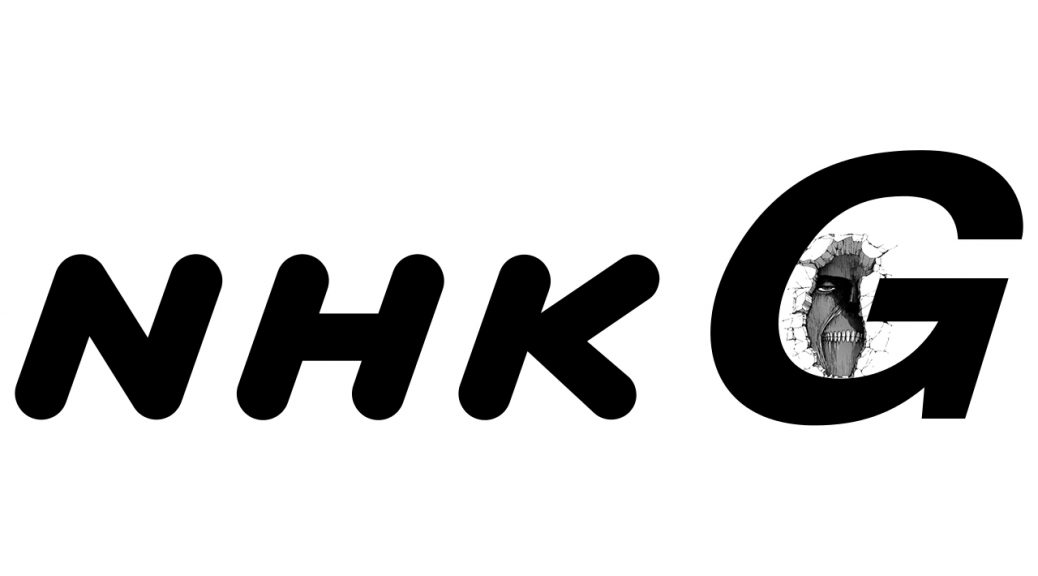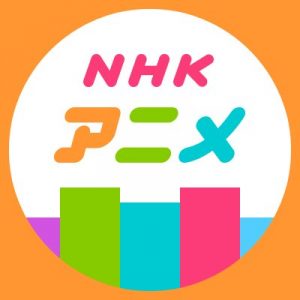
The State of Anime on NHK
Just yesterday it was announced that the third season of Attack on Titan would be broadcast on NHK’s general channel, on paper getting the most mainstream platform TV anime can aspire to. That’s a good opportunity to give some context to the whole situation: what does it mean, NHK’s plans for anime, and how those are affecting titles like the aforementioned titans, Cardcaptor Sakura, March Comes in Like a Lion, and the rest of their very packed 2018 schedule.
Chances are that you’re already acquainted with the generally poor treatment of anime on television. It’s more often than not relegated to latenight broadcasts even when the content doesn’t fit those timeslots, and has to rely on a myriad of TV stations to get proper coverage. NHK, Japan’s public broadcasting network, bypasses the latter problem by being available everywhere – which might seem minor, but coupled with the understandable popularity of the channel it does wonders for accessibility. Getting an NHK broadcast doesn’t automatically ensure popularity, of course, but it’s a very important tool to enable reaching into the mainstream.
There’s much more nuance to it than simply making it to the network, however. There are multiple NHK TV channels, and anime’s presence in all of them is very different. Their two satellite stations – NHK BS Premium and NHK BS-1 – are filled with rebroadcasts and late airings, which technically do reach everywhere but are much more limited as they’re not broadcast normally. I’d love to say that they’re more or less irrelevant to the current state of affairs, but Cardcaptor Sakura Clear Card’s sole TV presence at the moment happens to be at NHK BS Premium, which is a bit of an incomprehensible decision. Though common sense says that it should eventually make it elsewhere, for now the management of the 20th anniversary of the series leaves to be desired. The original show of course made it to a different station: NHK-e, their educational TV channel that has featured the vast majority of actual NHK anime; classic kids shows like CCS, Azuki-chan, and Corrector Yui, varied family-friendly programming ranging from Major to Log Horizon, and even their own edited version of Nichijou. When it comes to platforms to showcase non-risque anime, you can’t go wrong with NHK-e.
But if we’re talking about this network in particular, NHK-e is by all means the younger sibling. Their main channel is NHK General TV, shortened to NHK-G following the same naming conventions. They broadcast right about everything you’d expect from a major station: news, sports, variety shows, drama, music… and essentially no anime. Up until recently, you could a decade’s worth of anime broadcast with one hand, and it’d be almost entirely rebroadcasts, titles inherited from ages ago, and curious exceptions. Anime wasn’t a minor element on NHK-G, it simply wasn’t a factor at all. You’d think that with the inevitable downward spiral all anime on TV is facing, issues like that would only get worse. But perhaps seeing the current anime boom as an opportunity, NHK have decided to bet harder than ever on it. Starting with March Comes in Like a Lion, the adaptation of a very popular manga that also involved easily marketable names, NHK-G launched their first real anime timeslot; Saturday 11pm isn’t quite prime-time, but it’s not prohibitive enough to cancel out how big of a deal this was. We’ve seen other important anime slots being founded over the last couple years, like Fuji TV’s unexpected Sunday 8:30 offering for Monster Hunter, but this is easily the most important one.
That NHK-G slot has continued with titles like ATOM: The Beginning and The Reflection, seemingly performing well enough for the network to announce a heavy 2018 lineup. They first revealed adaptations of award-winning manga Piano no Mori, Kyoto Animation’s Tsurune, and the supernatural novel Tsukumogami Kashimasu, clearly aiming for different kinds of prestige anime without going all-out on mega-popular titles… until yesterday, that is. In one of the least expected anime industry twists, it was announced that the third season of Attack on Titan will air this summer on NHK-G. In a vacuum, one of the most popular titles of the decade ending up on the anime timeslot with the most mainstream exposure makes sense, but the overall situation is so confusing that even anime scholars have no clue about what’s going on. I can’t offer you definitive answers, but there is still important information to be inferred here:
- Attack on Titan season 3 will most likely be one cours again, to the dismay of its most vocal fans.
- Even with only 12 episodes of titans, there’s no denying the fact that NHK-g now has more announced titles for 2018 than they can actually air; they’re being mysteriously silent about Piano no Mori despite it being meant to start in just a couple months, but bringing back a title years after it ended just to partially adapt it would be a nonsensical move. It will probably take more than 1 cours and thus a split broadcast, which would push the other 2018 titles into 2019.
- Yesterday it presumably leaked that French manga series Radiant also has an anime adaptation produced by NHK and slotted for 2018. Up until recently we’d have to assume that means NHK-e, but things aren’t so clear anymore, especially with NHK-G having already held an international collaboration in the form of The Reflection.
- All this could be pointing at the NHK-G anime slot expanding to include two shows within the next months. That would be excellent news, but again, no one knows what’s exactly happening.

It’s obvious that anime doesn’t need the support of television to make it big. Traditional platforms are, if not on their way out, at least losing relevance. But they still are media juggernauts with the ability to attract huge audiences, so their relationship with anime is always worth considering. Hopefully this has shed some light into admittedly confusing but important developments!
Support us on Patreon to help us reach our new goal to sustain the animation archive at Sakugabooru, SakugaSakuga (作画): Technically drawing pictures but more specifically animation. Western fans have long since appropriated the word to refer to instances of particularly good animation, in the same way that a subset of Japanese fans do. Pretty integral to our sites' brand. Video on Youtube, as well as this SakugaSakuga (作画): Technically drawing pictures but more specifically animation. Western fans have long since appropriated the word to refer to instances of particularly good animation, in the same way that a subset of Japanese fans do. Pretty integral to our sites' brand. Blog. Thanks to everyone who’s helped out so far!

What about Fuji TV and TV Tokyo? The most popular anime in japan aren’t in there?
Alongside Asahi and NTV they’ve got a bunch of the most popular daytime anime programming, but they’re regional stations (part of larger networks of course) that don’t have NHK’s reach. If they get serious about anime, which they seem to be considering, they’ve got the potential to reach new audiences like no one else.
What would suggest they are getting serious about anime?
The first regular anime slot on the general channel, the launch of a PR outlet specifically for NHK anime, basically everything this post is about.
Isn’t the choice to broadcast the new CCS on Premium a way to sell the satellite service?
Limiting the audience for the anniversary celebration seems pretty shitty, and I’m honestly not convinced it even would have much of an effect in that regard since it’s not full exclusivity either. It’s a bit disappointing that while they’re trying to reach out to new people, CCS is being limited instead.
Cardcaptor Sakura actually originally aired on NHK-BS2 first on April 7, 1998 between 18:00-18:30, and then re-ran on NHK-E exactly a year later on April 10, 1999. (This is from Japanese sources that can be reviewed online, don’t want to link here because of spam filter, but this is easily available.)
Clear Card has just started airing (although it is airing very early on Sunday morning), but it could very well reair on NHK-E next year, just like the original series.
Oops my mistake, I thought it was the other way around! Should have double-checked that one. And yeah, I’m pretty sure it *will* get its non-satellite broadcast on NHK-e sooner than later, it’s just a bit of a shame that they didn’t do it right off the bat. And regarding the time – it’s early, but it could be even worse! The not-really-replacement for Nichigo has important titles airing at 6:30am on the weekend, which is… yeah. Just last week I saw an animator asking people to watch his work on the new Seven Deadly Sins but at the same… Read more »
What makes you think Attack on Titan season 3 will be one cour? The teaser showed the volumes 13 to 22, which they would need 2 cours for to cover: https://www.youtube.com/watch?v=NxgU9oMP8IA
DId they change their minds or what?
It landed on a very special timeslot but also a very busy one, so it really can’t be any longer unless they’re expanding it (which would be one of the lowkey biggest anime news of the year). Various Titans staff is also doing lots of work elsewhere, which seems to indicate their workload over there isn’t massive.
But you were a lot more optimistic in your Attack on Titan season 2 production notes article: https://blog.sakugabooru.com/2017/06/19/attack-on-titan-season-2-production-notes-12-and-final-impressions/
What do you mean by a busy timeslot? That there has to be room for many other anime that are airing later in the year? Also, are there any chanes that AoT S3 at least becomes split cour?
I always wondered how most anime fans in Japan watch anime. It feels like nowadays more people watch online rather than watching/recording on TV. Though, I understand that the TV stations still have large impact on the productions, right? Like they’re always somewhere near the top of production committee.
Excellent articles, very interesting. I’m a big fan of many of the shows that air on NHK and I hope this will help to revitalize the shows that are family-friendly instead of just kid-friendly and have a somewhat cultural importance. I’d be really cool to have two NHK-produced shows per season.
Good article, it’s interesting how while NHK are entering the anime market aggressively, while NTV in the other hand are slowly pulling out from it and we aren’t seeing them producing psychological anime like Kaiji or parasyte, and drama like NANA and Chihayafuru.
The radiant anime produced by NHK is an hoax, the original author and his publisher denied this news : https://twitter.com/Totankama/status/956870349530025985
It’s officially confirmed as real now, they were just doing damage control to clumsily stop the leak https://twitter.com/nhk_animeworld/status/958536758278287360
(I had originally checked behind the scene to make sure this was true, but wasn’t able to confirm which NHK station it was headed to, hence my doubts on the post. Good to know it’s NHK-e, not good to know it’s Kishi.)